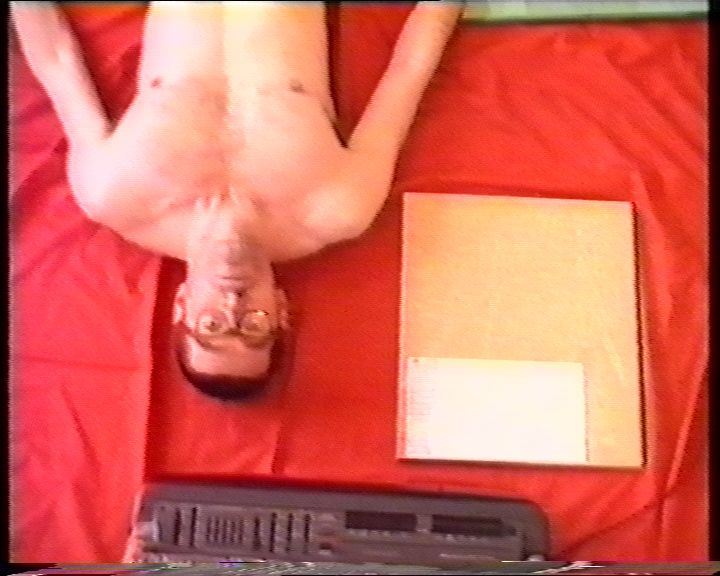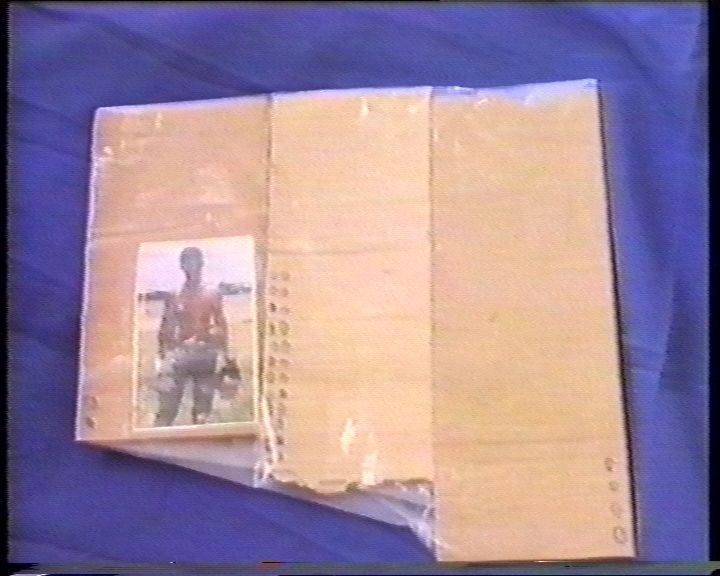Thomas Hirschhorn
Interested in a social and political dimension of art, Thomas Hirschhorn initially worked with the Grapus design group. In 1986, he decided to dedicate himself entirely to the plastic arts and, more specifically, to sculpture. Starting from his first solo exhibitions in the late eighties, he has progressively developed an original sculptural research that combines everyday, poor, and disposable materials—garbage bags, plastic, plexiglass, wood, cardboard, aluminum foil—retrieved and put together with an abundant use of adhesive tape. These works are enhanced through collages created from advertising images found in fashion magazines. Everything is then recomposed with fragments and quotations of philosophical texts, often directly rewritten by hand by Hirschhorn or photocopied. This gives rise to a complex and often hypertrophic body of work in which one finds the mingling of a wealth of ideas with a poverty of means: kiosks, altars, huts, information centers, and a wide range of pieces the artist defines as ” monuments,” all born from the total fragility of the differently assembled materials. The artist explains that what interests him in the apparent precariousness of the materials used is the mental energy kindled and stoked by the juxtaposition and reaction of different objects.
In experimenting with places and contexts that always differ, the artist develops interventions in private and public spaces and, in always going one step further, creates counter-monuments dedicated to philosophers and writers. In recent years, he has paid tribute to Robert Walser, Spinoza, Deleuze, and Bataille, showing his interest in and commitment to radical forms of contact and intervention in urban spaces. In recent years, larger and more complex projects have been conceived and co-created with the inhabitants of the city neighborhoods of Münster (summer 1997) and Kassel (summer 2002).
The comparison—or confrontation—with an unpleasant past and with the most dramatically critical phenomena of the present-day political situation is the basis of Hirschhorn’s interest, as are also the socio-economic conditions involved.
As the artist put it: “Art exists as the absolute opposite of its time-as the absolute opposite of the reality of its time.” In a series of works of almost visceral impact, the explicative titles indicate his intention and the content of his work. On backgrounds of bright colors and with loud soundtracks it is the artist himself who stages then symbolic actions. As Hirschhorn puts it: “I’m not interested in ‘quality,’ I’m interested in ‘energy.’” [F.B.]
List of Works
Five Bar Clips, 1995
video, color, sound, 25 min. 30 sec.
Castello di Rivoli Museum of Contemporary Art, Rivoli-Turin
Robert Walser Video, 1995
video, color, sound, 4 min.
Portrayed frontally and with his head rhythmically swaying in time with the music, the artist is seated under a banner bearing the same title as the video.
Thank You, 1995
video, color, sound, 8 min. 20 sec.
The naked artist first slaps his right and then his left cheek, while in his other hand he holds a cut-out of a female model.
La cuisine des Mosquetaires (The Kitchen of the Musketeers), 1995
video, color, sound, 1 min. 30 sec.
The artist’s arm enters the shot and repeatedly puts the beginning of a song by the Sex Pistols on the record player, while on a monitor two cooks are seen.
For Nelson Mandela (Biko), 1995
video, color, sound, 7 min.
With the accompaniment of “Biko” by Peter Gabriel, the artist is posed in respectful adoration of a South African flag with an image of Nelson Mandela at the center.
I Will Win, 1995
video, color, sound, 4 min. 05 sec.
Seated, bare-chested, and his face wrapped in tinfoil, Hirschhorn shows the victory sign, raising both hands.
Zwei Tränen (Two Tears), 1995
video, color, sound, 24 min.
Castello di Rivoli Museum of Contemporary Art, Rivoli-Turin
Zwei Tränen (Two Tears), 1995
video, color, sound, 1 min. 35 sec.
Hirschhorn tries to paint, placed next to another painting.
Robert Walser Lektüre I (Robert Walser Lecture I), 1995
video, color, sound, 3 min. 20 sec.
Robert Walser Lektüre II (Robert Walser Lecture II), 1995
video, color, sound, 4 min. 20 sec.
In both of these works, the artist sits reading in front of a banner bearing the same title as the video. At a certain point he gets up and moves towards the camera.
Otto Freundlich Fan, 1995
video, color, sound, 11 min. 45 sec.
Hirschhorn starts playing a song (“The End” by the Doors), he gets up, puts on a scarf on which “Otto Freundlich” is written, and then listens to the music he has chosen.
Hallo-Schiff (Hallo-Boat), 1995
video, color, sound, 22 seconds.
An off-screen voice says “Hallo” as a motorboat—flying the Swiss flag—passes by on a lake.
Video Compilation (Clips), 1995
Castello di Rivoli Museum of Contemporary Art, Rivoli-Turin
Prince and Me, 1995
video, color, sound, 5 min.
To the rhythm of a piece by Prince heard in the background, the shot remains fixed on a reportage photo that shows an African man holding a human head in his hand.
Lust for Life (Claudia), 1995
video, color, sound, 5 min. 10 sec.
To the music track of the same title by Iggy Pop, the artist is hidden from the public behind a piece with a collage showing the face of Claudia Schiffer coupled with a horrifying photograph.
Rotes Tuch (Red Cloth – Desire 1), 1995
video, color, sound, 6 min. 10 sec.
Filmed from above the artist, from his waist up, he is lying on red cloth listening to the track “Desire” by U2.
Antifaschistischeaktion (Desire 2) (Anti-fascist Action – Desire 2), 1995
video, color, sound, 6 min. 10 sec.
A close-up of a ghetto blaster (portable radio) with a red flag next to it. At max volume the radio plays U2’s “Desire.” At regular intervals a forearm with a fist enters the scene.
Nice to Meet You, 1995
video, color, sound, 13 min. 40 sec.
Castello di Rivoli Museum of Contemporary Art, Rivoli-Turin
To the sound of “Sympathy for the Devil” by The Rolling Stones, in the famous recording of the mortal accident at the concert in Altamont, a blonde girl smiles in the direction of the video camera.
Stars in the Sky, 1995
video, color, sound, 4 min.
A still image dedicated to an ad for a fashion house featuring Claudia Schiffer leaning on a table.
Moonlight Lady (Wiegenlied), 1995
video, color, sound, 3 min. 20 sec.
Filmed from above and with background music, Hirschhorn moves a wooden board with his hands.
Integrated Videos, 1999
video, color, sound, 15 min.
Purchased with the contribution of the Compagnia di San Paolo
A sequence of images shot during exhibitions held in recent years gives an account of the variety of Hirschhorn’s installations and interventions. A musical crescendo accompanies.
















